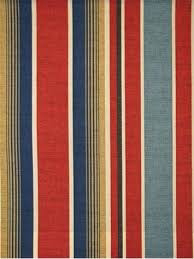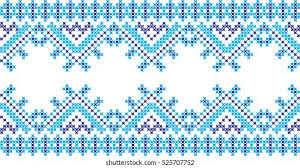VARIOUS METHODS OR TECHNIQUES OF FABRIC DESIGN:-
Various Methods or Techniques of Fabric Design:-
INTRODUCTION:-
Now a days people are not interested to wear normal single colored fabric. They are willing to wear different multi color designed fabric. There are huge demand of designed fabric. For fulfillment customer satisfaction textile engineers apply various techniques of fabric design to produce different designed fabric. There are various techniques of fabric design.
( Fig: Fabric designing by hand embroidery) ref by printerest.
For producing design on woven fabric the following techniques are applied:
1) Dyeing (like poly chromatic dyeing)
2) Printing
3) Spraying
4) Weaving
5) Embroidery
6) Chemical finishing (resin finishing, mercerization)
7) Mechanical finishing (raising, calendaring etc.)
Methods of producing various Checks and Stripes:-
Warp patterning is used for stripes while weft patterning is used for cross over effect. The continuation of warp and weft patterning i.e. continuation of stripes and cross over produce check effect. (in case of weaving)
We can produce various checks and stripes in the following methods:-
We can produce various checks and stripes in the following methods:
1) By printing
2) By dyeing
3) By weaving
4) By knitting
5) By art works/Painting
6) By embroidery.
Designing on the Fabrics by Weaving:-
We can create the following designs on fabrics by weaving:-
1) Stripe effect
2) Cross-over effect
3) Check effect.
Now they are described below:-
1) Stripe Effect:-
Warp patterning is used for creating stripe effect on fabric. Stripes are actually warp way patterns. For stripe effect we must use sectional warping and the beam should be prepared during warping and denting.
Stripe effect may be produced on woven fabric by the following methods:-
a) By using different coloured warp yarn check & stripe effect may be produced.
b) By using different counts of warp yarn.
c) By the use of different kinds of yarn.
For example 30Ne carded yarn and 30Ne combed yarns are used. It will create a subbed/shadow effect on fabric.
d) By the use of different types of warp yarns.
For example, Pakistani, Egyptian, American upland and China cotton yarns are used side by side
e) By the use of different twist of warp yarns.
For example, high and low twisted yarns or yarns with Z-twist and S-twist are used. This will creates a shadow effect on fabric
f) By the use of sidderently tensioned warp yarns. This will create a crepe effect on fabric
g) By the use of different set of warp yarns. That is to say by using different EPI & PPI in different areas of fabric.
h) By using different weave structures through different drafting and lifting plan.
2) Cross-over Effect:-
Weft pattering is used for cross-over effect. Cross over is done during weaving through insertion of different coloured or types of weft yarns.
Cross-over Effect is produced by the following methods:-
a. By using different box motions like drop box, circular box, pick-at-will and weft selection mechanism
b. By different take-up rate, by changing the change pinions. For example 50 PPI by one pinion, 60 by the other. Some box motions are as follows:-
1) 2×1 drop box (we can use 2 colours of yarns)
2) 2×1 weft mixing motion
3) 4×1 drop box (we can use yarns of 4 colours)
4) 6×1 circular box (6 colours can be used)
5) Weft selection mechanism (modern)
6) 4×4 pick-at-will (7 colours of yarn can be used)
7) 4×2 pick-at-will (5 colours of yarn can be used)
8) 6×6 pick-at-will (11 colours of yarn can be used).
3. Check Effect:-
The continuation of warp and weft pattering produces check effect. Check effect is produced by warping, denting and weaving.
Ref:-https://textilelearner.net






Comments
Post a Comment